If we're interested in finding life beyond Earth, the subsurface oceans of the icy moons in our Solar System may be the best places to search for it. The implications of even finding microbial life outside our home planet would be enormous, both in partly answering that fundamental question 'will we ever find life beyond Earth?' but also in teaching us more about the conditions required for life to emerge.
A leading voice in the search for life in the Solar System is Kevin Peter Hand. Hand is a scientist at NASA’s Jet Propulsion Laboratory and author of Alien Oceans, a new book published by Princeton University Press.
Read more about the Moons of the Solar System:
- Organic compounds found in Enceladus plumes
- NASA's Dragonfly to explore Saturn's moon Titan
- Europa's ocean may support life
We spoke to Hand to find out why oceans on frozen Solar System bodies are such promising places to search for life, and what a positive discovery would mean for our species.

Why are the icy worlds of our Solar System so important for study?
These are the moons of large planets in the outer Solar System, like Europa around Jupiter and Enceladus and Titan at Saturn.
They have alien oceans that contain liquid water, and if we’ve learned anything from life on Earth it’s that where you find liquid water, you generally find life.
With so much water in these distant oceans, the big, motivating, exciting question for me and my colleagues is, if there’s that much liquid water out in these alien oceans, could there actually be life?
That’s really the subject of your book Alien Oceansisn’t it? The search of life among these subsurface oceans.
Yes, the book goes through a few different aspects of the search for life both on Earth and beyond Earth.
I go through a bit of the history of how we’ve explored the depths of our own oceans, and what that exploration has taught us about the extremes of life on Earth. How that information is helping guide us as we assess the habitability of these distant oceans in our Solar System.
It goes through how we think we know that these distant oceans exist, and what kind of data have come back from the spacecraft and telescopes that have enabled these insights.
In the later chapters it takes a forward-looking approach, considering what the future of exploring these distant worlds could bring.
I also speculate what life within these distant oceans might look like. For the most part, when we talk about the search for life beyond Earth, we’re focussed on even the tiniest of microbes.
But these is some chance at least that larger organisms could exist. In the ocean of Europa, there might be oxygen dissolved in the water, which could potentially be used by larger organisms.
Might we find in these oceans animals like fish, or other aquatic life we see on Earth?
Who knows? First and foremost, we don’t really have a good understanding of how multi-cellular life came about on Earth.
We’ve got a lot of the pieces of the puzzle, and those pieces are the following:
First, multi-cellular life came about roughly 600 or so million years ago, and we often associate the Cambrian explosion with the rise of complex life.
The most important environmental variable that changed at that time, and which possibly enabled the rise of complex life and animals, was the rise of oxygen in our atmosphere.
And obviously we human beings know that we require oxygen! We breathe in oxygen and combine it with carbohydrates to fuel life.
If we don’t find life, even though that’s potentially less exciting, it is equally profound. It means life is quite rare: not just in our Solar System but perhaps even beyond.
So if oxygen is the key energetic motivator for enabling multi-cellular life, then when we think about these alien oceans we can ask whether there’s any chance that they could have oxygen dissolved in their water and could power multi-cellular life.
At first, the answer would seem to be no! That’s because on Earth the abundance of oxygen in our atmosphere comes from photosynthesis.
Photosynthesis is driven by energy from the Sun, and on worlds like Europa and Enceladus the ice sheets are going to make photosynthesis a very unlikely niche for life.
These worlds are likely dark, where sunlight doesn’t penetrate. Of course that depends exactly how thick these ice sheets are, and there are some outstanding questions there.
So it might seem like photosynthesis and thus oxygen in the ocean is a non-starter.
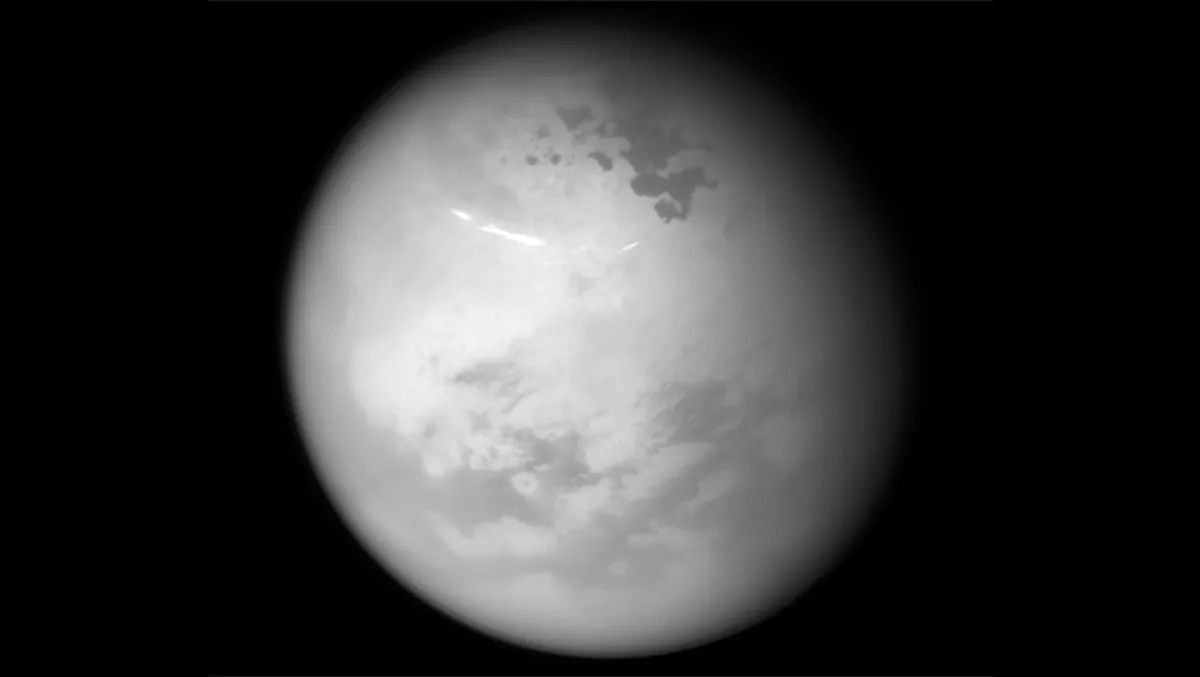
But at least in the case of Europa, there is a curious added process that’s occurring, and that’s radiation processing of the surface ice.
Europa exists within Jupiter’s incredibly strong magnetic field. That magnetic field has got energetic electrons and ions, protons: all sorts of charged particles bouncing up and down along those magnetic field lines.
As that magnetic field sweeps by Europa, those charged particles bombard the moon’s surface ice.
In the process they split apart the water, H2O, into OH, plus O: it all gets bombarded and broken apart, and then recombined.
We’ve observed, both with ground-based telescopes and spacecraft like Galileo, hydrogen peroxide and oxygen in the surface ice of Europa
So radiation produces oxygen in the ice, and if that ice mixes in with the ocean below, there might be a way of oxygenating the water beneath the ice.
Could that lead to the evolution of complex life? I have no idea! But there is a chance that the oxygen abundance is sufficient to support things like polychaete worms and other organisms that exist within our ocean on a relatively limited oxygen supply.
This is all highly speculative, but it’s great fruit for the imagination and a lot of fun to play around with.
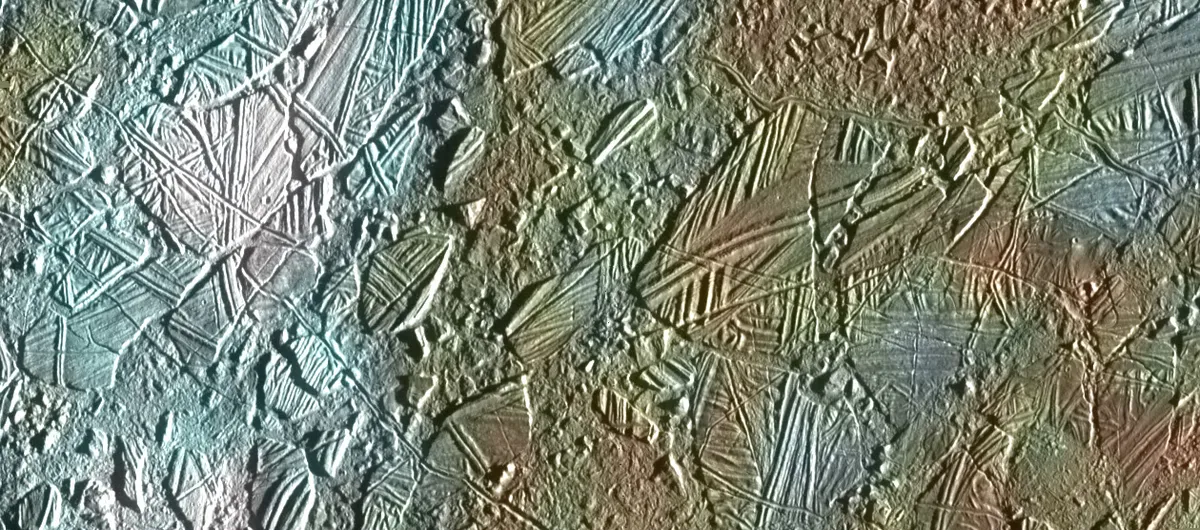
What missions are planned that will explore Jupiter's moon Europa?
The next step for Europa is the NASA Clipper mission, which will orbit Jupiter and fly by Europa some 45+ times.
Somewhat simultaneously will be the European Space Agency’s mission called the Jupiter Icy Moons Explorer (JUICE), which will initially orbit Jupiter and will fly by Europa twice. Then it will go into orbit around Ganymede.
In roughly the late 2020s we could have 2 spacecraft investigating Europa and Ganymede and making a couple of flybys of the other large moons.
Neither of those missions has a lander on board, so those missions won’t get us to the surface, but that’s something I’m currently working on with my colleagues at JPL and across the country, to hopefully move forward with.
Right now NASA has no plans or commitment to such a mission, but there are plenty of us within the scientific community and within the broader public who are tremendously excited about that prospect.
It’s really only with a lander that can scoop up material that we can really look in fine detail for biosignatures, for signs of life, for the complex organics or the structures that you might see with a microscope.
That’s a mission that I’m tremendously excited about.
After that would hopefully come a mission that drills or melts through the ice and actually reaches the ocean below.
My hope is that in the decades to come we can pursue that exciting notion of exploring these alien oceans.
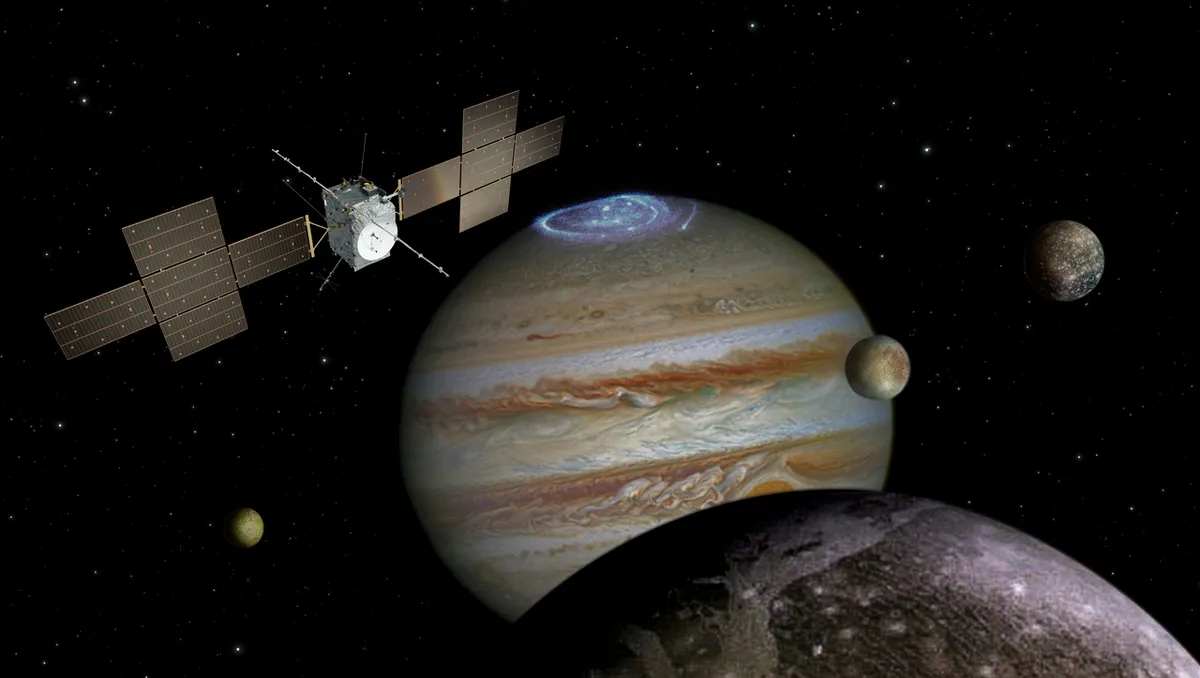
If any mission were to discover microbial life, wouldn’t it be great if we could launch a sample return mission to actually scoop up material and bring it back to Earth?
Yes and no! Firstly, time and gravity are a real pain in the neck when you think of doing sample return.
In the case of Europa, sample return would mean going down to the surface, getting a sample, dealing with all the complexity of getting that sample, and then launching a spacecraft that can get off of Europa and escape Jupiter’s gravity to get back to Earth.
That’s not impossible, but Jupiter’s gravity well is strong and deep, and basically holds on to anything that enters into its realm.
In the Saturnian system, there’s Enceladus, and we have actually looked at some sample return capabilities for that moon.
The idea there is that the plumes on Enceladus alleviate you from the burden of having to go down to the surface.
So you could fly by Enceladus numerous times, collecting samples from the plumes, and then swing back around to Earth.
That is feasible. It’s somewhat enabled by solar electric propulsion, which can slowly give you the accelerations you need.
But it would take a long time, and the amount of sample that you would collect would actually be quite small because even though the images of the plumes of Enceladus that we see look like thick veils, they’re really actually quite diffuse. So you might only be getting a tiny thimble-full of sample.
Coupled with that, as much as I would love to do a sample return mission and bring a microbe or a creature from a distant world back to Earth for detailed study, think about the planetary protection concerns.
For any mission, we have strict criteria of regulations and cleanliness metrics that we have to meet, to first make sure we don’t forward contaminate that world.
We don’t want to bring any Earth microbial hitchhikers to, say, the ocean of Europa or the ocean of Enceladus.
Second, to make sure that we don’t contaminate our measurements. We might be searching for life in an alien ocean and get a false positive by detecting a microbe that we brought with us.
And that’s just in the forward direction. Now imagine we’re thinking about a sample return mission from one of those worlds.
Bringing a sample back to Earth then puts up this huge barrier of making sure that you contain that sample and that we protect our own planet from an alien organism.
In theory it would be wonderful; in practice the technological complexities and the planetary protection would put up huge barriers.
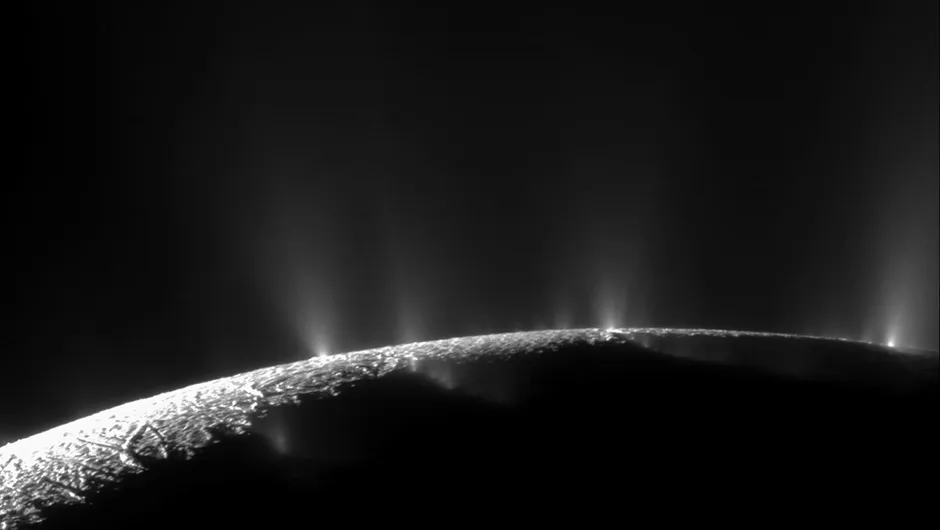
Were we to complete a full reconnaissance of the Solar System, would you be more surprised if we did find life, or if we didn’t find life?
It’s a great question and one that I ponder quite a bit. What it really comes back to is the fundamental question of whether the origin of life is easy or hard.
If the origin of life is easy and occurs under numerous conditions, then I think that the origin of life may have occurred many times on planet Earth, and many times within our own planetary back yard.
So if the origin of life is easy, then I think we should expect to find life within our Solar System.
If the origin of life is exceedingly hard and life on Earth is some sort of biological singularity, then of course we might not find life anywhere else in our Solar System.
But that’s part of the importance of doing these great experiments, where we can actually go to Mars, Europa, Enceladus, Titan, Triton, you name it, and look for signs of life.
If we find it, that’s amazing, and we can begin to study life and start to think about the great tree of life, start to think about the periodic table for life and how we understand life in a larger context.
If there were to be intelligent life within an ocean like Europa’s, it would not be able to see the night sky above. It would not know that it exists in space.
If we don’t find life, even though that’s potentially less exciting, it is equally profound. It means life is quite rare: not just in our Solar System but perhaps even beyond.
And it really turns the microscope back on our own tree of life: how did life on Earth begin?
There is a bit of a debate within the origin-of-life community. There are many different aspects of this that we’re currently trying to understand.
Does the origin of life require warm tide pools on the shores of an ancient ocean, where sunlight can bathe that tide pool, water evaporates, dries out the components and concentrates amino acids so that they come together? Is that what the origin of life requires?
Or can the origin of life occur, say, in deep-sea hydrothermal vents at the bottom of the ocean?
Maybe the answer is both.
But if life can only originate in rocky tide pools with just the right chemistry, then it may be that Earth and Mars are the only places where life exists or has existed in our Solar System.
On worlds like Europa and Enceladus and Titan, there are no continents, no rocky environments: everything is covered in ice and water, and so that modality for the origin of life would not work.
But the deep-sea hydrothermal vent modality could work on these moons, so perhaps something within the ice shell itself could help with the origin of life.
This is a testable hypothesis. We can go to Mars, Enceladus, Titan, and see if life is there, and that will inform us about the modalities for the origin of life.
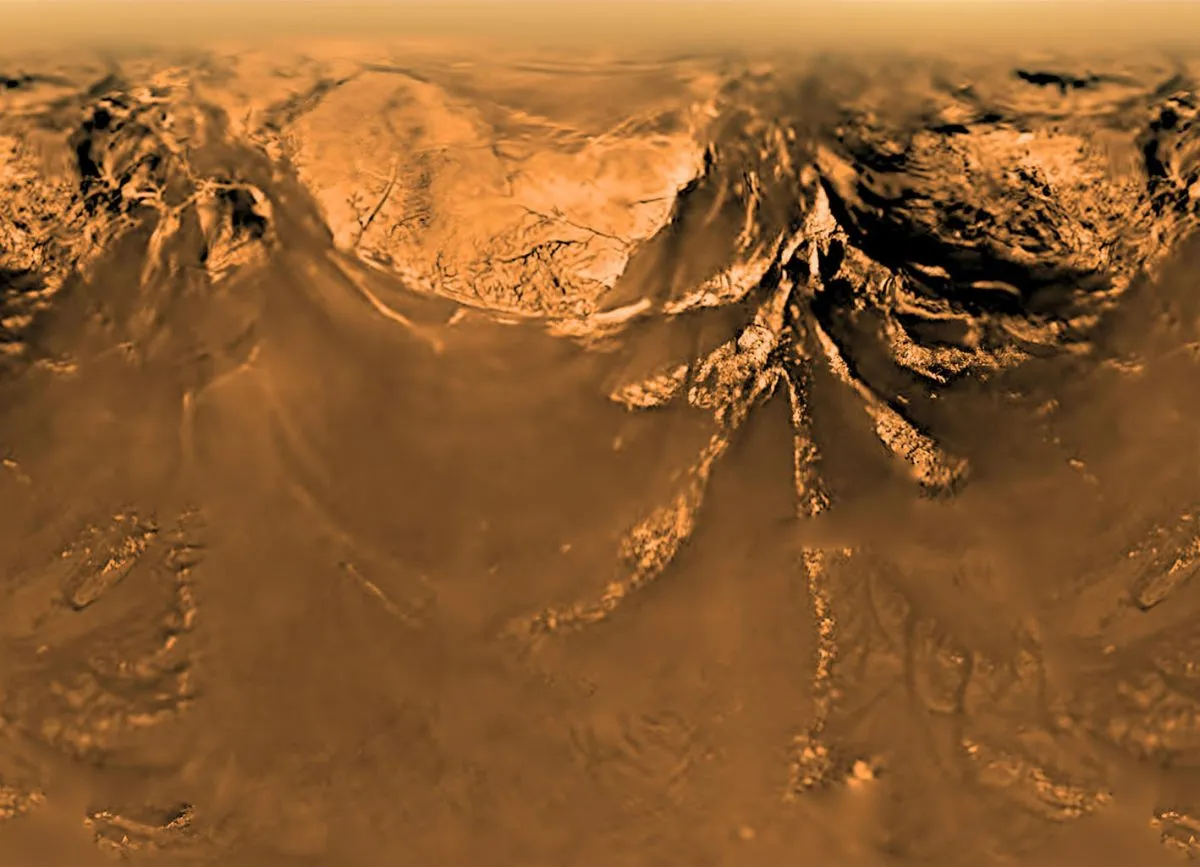
If it turns out that life can only exist on warm, rocky worlds, then surely the search for signs of life has to focus on exoplanets. But isn’t it more difficult to look for biological signatures on planets beyond our Solar System?
Yes and no! On the one hand you’re absolutely right because we would be limited to the spectroscopy of the atmosphere, looking for chemical disequilibria, oxygen in the atmosphere co-existing with methane, and we can say “we found life!” because these little squiggles in the spectra tell us that only life and biology can cause that kind disequilibria in the atmosphere.
That’s exciting, but it’s hardly a close-up picture of an organism, like a Europan squid for example.
The flip-side of that is that exoplanets, as we continue to discover them and map out our stellar neighbourhood in our Galaxy, potentially also give us a blueprint for where to target our SETI (Search for Extra-Terrestrial Intelligence) searches; where to do follow-up observations in the radio and optical wavelengths to potentially look for transmissions.
That would be the ultimate ‘biosignature’ and would be incredibly exciting.
So yes, on the one hand exoplanets could be limiting in the kind of life detection that we’re talking about, because we’re certainly not going to be sending robotic spacecraft to exoplanets any time soon.
But on the other hand, maybe there is a signal that’s propagating to us right now, and we just don’t have our radio telescopes or our optical SETI searches focussed on those worlds.
Is SETI something you are involved in, in terms of your own research?
Absolutely! It’s how I got my start. I worked for the SETI Institute many years ago, not directly on extra-terrestrial intelligence, but on the search for life in the Universe.
The work of my colleagues Jill Tarter, Frank Drake and others, I find tremendously exciting, and we need to do more of it.
I think there could be a signal from another intelligence out there and that we have just not completed a sufficient search across a wide enough band of the spectrum, across a wide enough slew of the night sky.
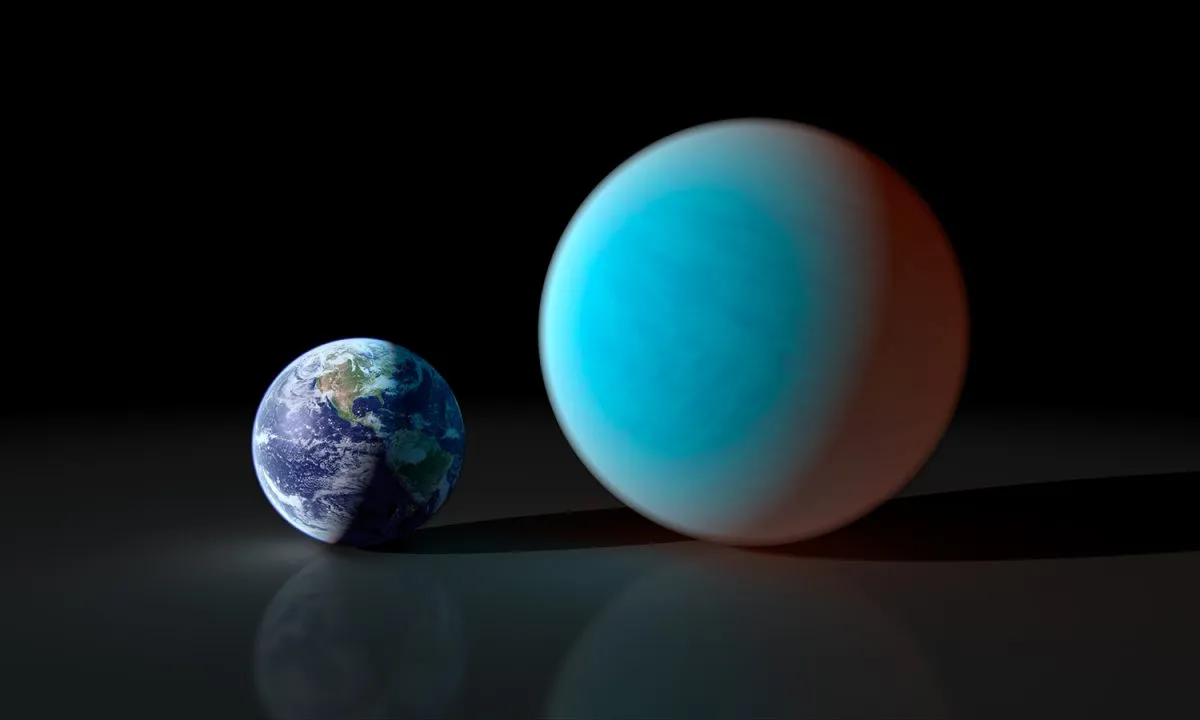
You’ve potentially got a lot of work ahead of you in terms of studying whatever data comes back from the Jovian system and trying to piece that together.
Yes indeed. The emergence and evolution of life has a number of bottlenecks, one of which is the origin of life itself, another of which is the origin of complex life, and then the origin of intelligence.
At least within our Solar System, we have the potential to see whether or not the origin-of-life bottleneck is truly a bottleneck, and if we find that life does exist in numerous places within our Solar System, then we can also explore that second major bottleneck of whether or not the origin of complex life is really difficult.
And there we potentially come back to the origin of Europa where enough oxygen, in theory, could help the evolution towards multi-cellular life.
That last one, intelligence: who knows?
In my book I speculate a bit about what intelligent life within an ice-covered ocean might look like.
Again this is just fun speculation, but think about it. Think about how much our ability as human beings, as homo sapiens, to look up at the night sky, the Sun, the stars, how much that ability to see the cosmos, has motivated our desire to explore and discover.
If there were to be intelligent life within an ocean like Europa’s, even in some distant system, it would not be able to see the night sky above. It would not know that it exists in space.
It probably would not have eyes in the way that we traditionally think of eyes.
Above would be an ice shell that’s creaking and cracking from the tidal energy dissipation, and so it would potentially have a completely limited understanding of its place in the cosmos.
How does that manifest itself in the evolution of intelligence? How does wonder and curiosity come about in an intelligent organism that doesn’t even necessarily know to ask the question “are we alone?”
We look up at the stars and think about the planets and it’s obvious to us that this is a question to ask, but if you evolved in a dark, ice-covered ocean, what is the existential crisis that that alien octopi undergoes as it ponders its existence?
These are some of the questions I like to ponder!
Alien Oceans by Kevin Peter Hand is out now from Princeton University Press.

